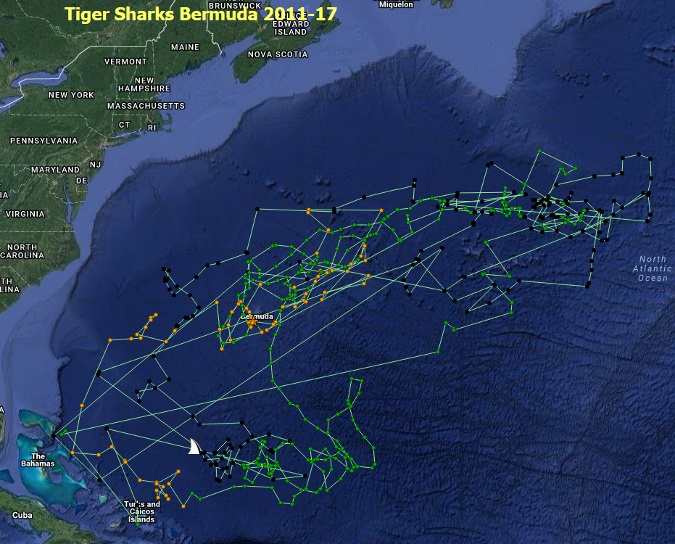Not freezing temperatures nor nor’easters nor Hurricanes Harvey, Irma, Jose or Maria can stop “Andy,” a tiger shark tagged in Bermuda by scientists from Nova Southeastern University’s (NSU) Guy Harvey Research Institute(GHRI) in 2014.

Travelling approximately 37,565 miles off the eastern coast of the United States and around Bermuda, the Bahamas and Turks and Caicos, Andy is now the longest tracked tiger shark on record and shows no sign of slowing down. He’s been going for more than 1,240 days.
“We are delighted with how long Andy has reported data, which has tremendous value for us as researchers,” said Mahmood Shivji, Ph.D., the director of NSU’s GHRI and a professor in the university’s Halmos College of Natural Sciences and Oceanography. “ This amazing, nearly three and a half year track is revealing clear repeated patterns in the shark’s migrations between summer and winter.”
More than 150 sharks, including tigers, makos and oceanic whitetips, have been tagged by the GHRI in the last decade. The data collected is used to study the migration patterns of these incredible creatures. Andy and many other GHRI tagged sharks can be followed online in near real-time at nova.edu/sharktracking.
“Tracking the migration patterns of sharks, like Andy, for extended periods of time allow us to better understand their behavior and habitat utilization, resulting in better knowledge on how to manage the species,” said world renowned artist and Guy Harvey Ocean Foundation (GHOF) Chairman Guy Harvey, Ph.D.
According to a paper published in the most recent ICES Journal of Marine Science by Shivji and his colleagues, tiger shark migrations are heavily influenced by a shark’s physical characteristics (i.e. size, age) and environmental variations (i.e. water temperature, prey availability). This study, funded by the GHOF, NSU’s GHRI, the Shark Foundation (Hai Stiftung) and the Bermuda Shark Project, reveals not only the environmental factors driving these massive migrations by tiger sharks but also highlights how the different age groups behave. This information could prompt fisheries managers to reevaluate how best to protect this near-threatened species.
Be sure to sign up for NSU’s RSS feed so you don’t miss any of our news releases, guest editorials and other announcements. Please sign up HERE.
